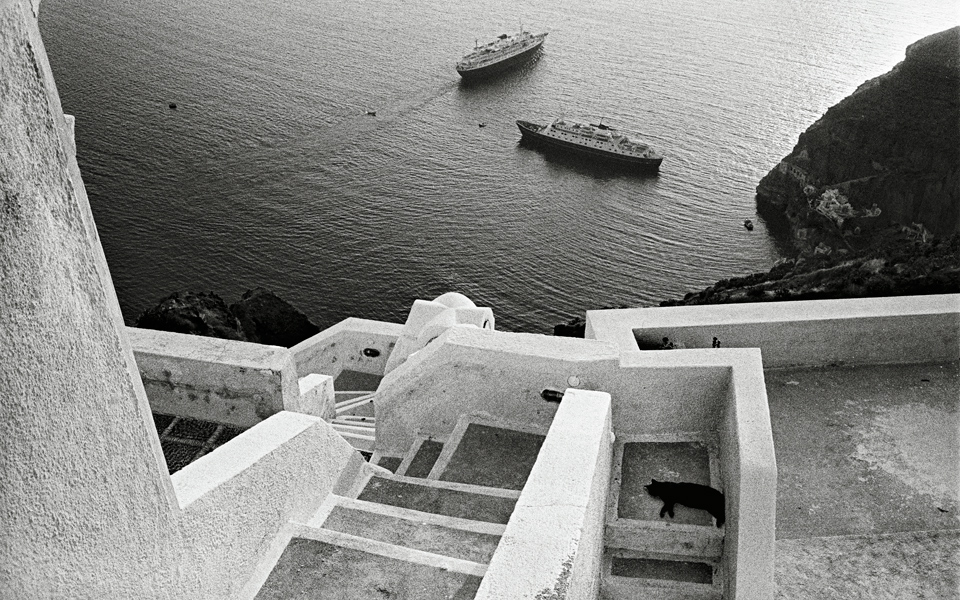Gymnopaidia Santorini I (excerpt)
Bend if you can to the dark sea forgetting
the flute’s sound on naked feet
that trod your sleep in the other, the sunken life.
Write if you can on your last shell
the day the place the name
and fling it into the sea so that it sinks.
We found ourselves naked on the pumice stone
watching the rising islands
watching the red islands sink
into their sleep, into our sleep.
Here we found ourselves naked, holding
the scales that tipped toward injustice.
Instep of power, unshadowed will, considered love,
projects that ripen in the midday sun,
course of fate with a young hand
slapping the shoulder;
in the land that was scattered, that can’t resist,
in the land that was once our land
the islands, – rust and ash – are sinking.
∗From the Collection “Poems” (Ikaros Publishing).
Translation by Edmund Keeley and Philip Sherrard.
Giorgos Seferis
(1900-1971)
A leading figure of 20th-century poetry, Giorgos Seferis was awarded the Nobel Prize for Literature in 1963. Born in Smyrna, Asia Minor, he studied law at the University of Paris and became interested in literature, before embarking on a long and successful diplomatic career. His wide travels provide the backdrop and color for much of his writing, which centers on the themes of alienation, wandering and death.
Ode to Santorini (1939, excerpt)
You were the first to leap forth into the world,
Porphyrogenite, sea-begotten,
You sent to the far horizons
Blessings nurtured in the sea’s vigils
To caress the hair of daylight’s waking hour.
Queen of the heartbeats, and wings of the Aegean,
With words that convert the infinite
With fire, lava, smoke,
You discovered the great lines of your destiny.
Now justice stands revealed before you
Black mountains sail in the brightness
Longings dig their craters
In the heart’s tormented land
And from hope’s struggle a new earth is made ready
So that on a morning full of iridescence
The race that vivifies dreams
The race that sings in the sun’s embrace
May stride forth with eagles and banners.
∗From the collection “Orientations” (Ikaros Publishing).
Translation by Edmund Keeley and Philip Sherrard.
Odysseus Elytis
(1911-1996)
Acknowledged as one of the most important figures of 20th-century poetry, Odysseus Elytis, winner of the 1979 Nobel Prize for Literature, is also one of the leading representatives of surrealism. In his work, modernism and tradition are fused in harmony. His first collections (“Orientations,” 1939, and “Sun the First,” 1943) are a celebration of the Greek landscape as an ideal world of sensual enjoyment and moral purity. The influence of the sea and the sun is diffused in almost all his poems.
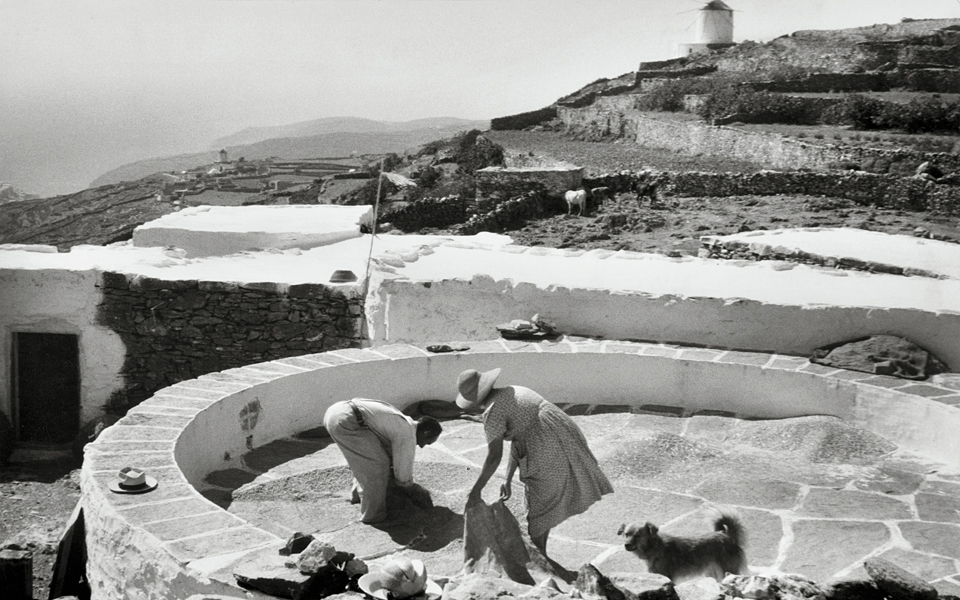
© HENRI CARTIER-BRESSON (1908-2004)
HENRI CARTIER-BRESSON (1908-2004)
“We photographers deal in things which are continually vanishing, and when they have vanished there is no contrivance on Earth can make them come back again. We cannot develop and print a memory.” Cartier-Bresson is considered the father of photojournalism. During two trips to Greece, in 1953 and 1961, he captured daily life, important personalities and simple folk in moments of work and play. Images such as the above comprise a unique testament of a way of life that has vanished under the waves of tourism development.
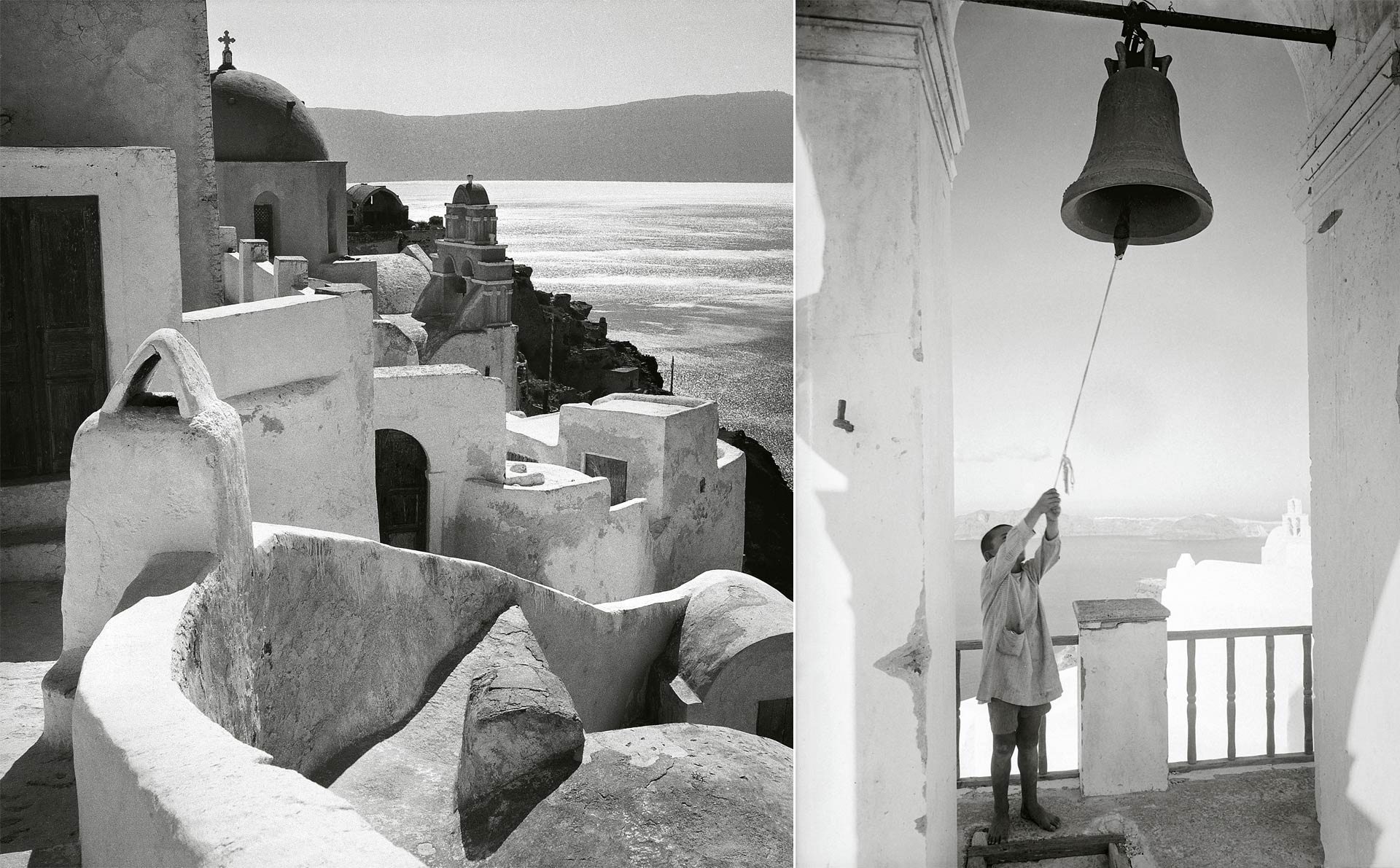
VOULA PAPAIOANNOU (1898-1990) & NELLY’S (1899-1998)
(Left) Best known for her humanist approach to the savagery of the Nazi occupation of Greece, Voula Papaioannou immortalized the suffering of the civilian population with particular sensitivity. By the time life had returned to normal, she was widely acclaimed and her work had been showcased in exhibitions and printed media. She subsequently began traveling across the country photographing landscapes, fragments of the ancient world and the toil of rural life, capturing in that unique style of hers, the Greek light – in its most idealized version.
(Right) A native of Aydin in Asia Minor, Elli Souyioultzoglou-Seraidari – better known by her professional name Nelly’s – helped shape the visual image of Greece in the Western mind with her photographs of ancient temples set against sea and sky backgrounds. Her work in Santorini, from the time when photography replaced traveler’s engraving as a pictorial record, has recently been republished in a luxurious coffee-table book titled “Nelly’s Santorini 1925-1930,” by the Archives of Santorinian Studies – Dimitris Tsitouras Collection.
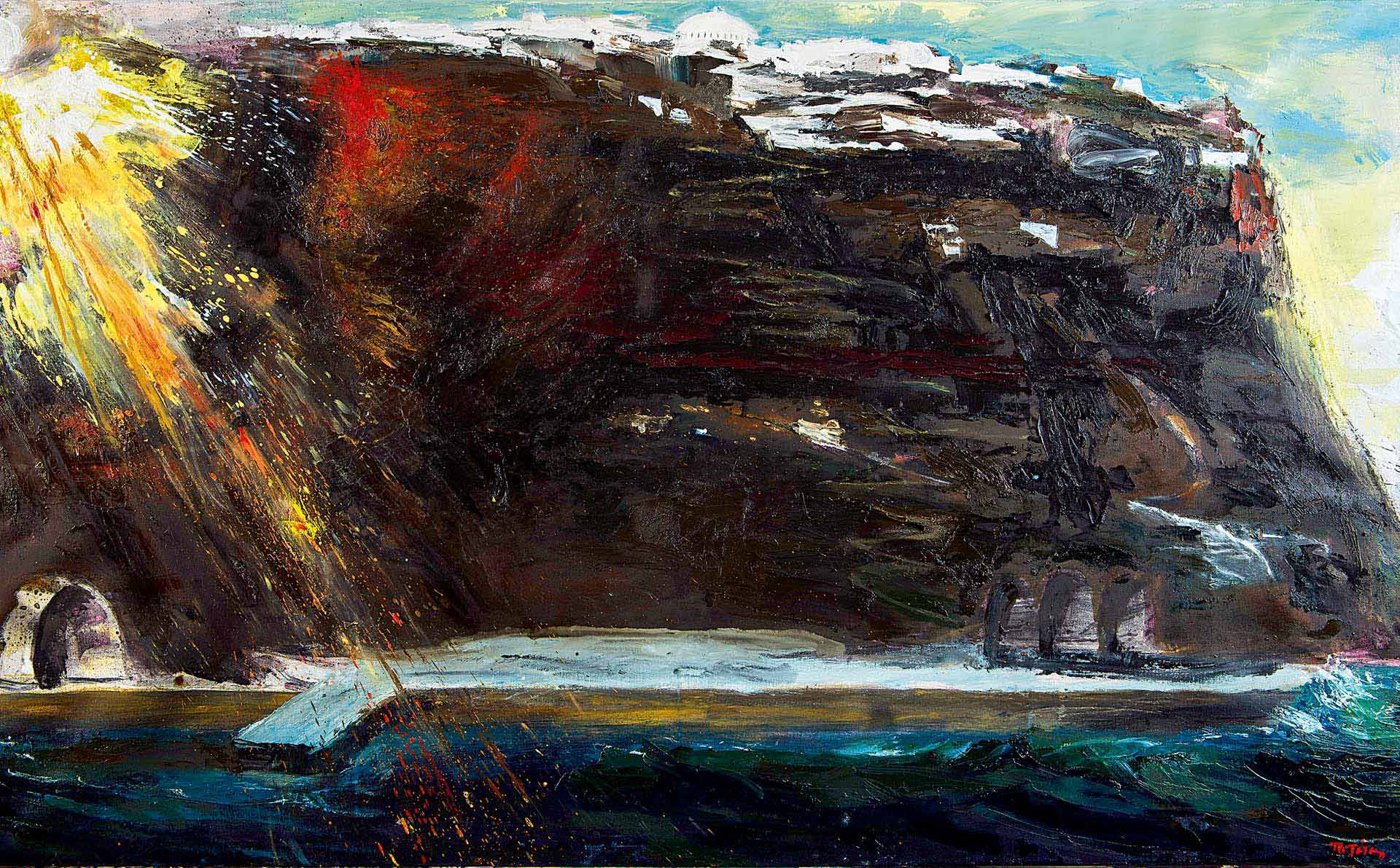
© PANAYIOTIS TETSIS
PANAYIOTIS TETSIS (1925 – 2016)
Panayiotis Tetsis, one of the foremost contemporary Greek painters, was a genuine exponent of the post-impressionistic seascape tradition. Amazingly enough however, he was bored by long voyages at sea. “I don’t agree with Cavafy that headed for Ithaca we ought to hope that the voyage lasts as long as possible,” he once said, adding, “I paint a large number of my seas from memory. I don’t need to paint them from life. And even if I do, I change them later in my studio, even changing them totally.”
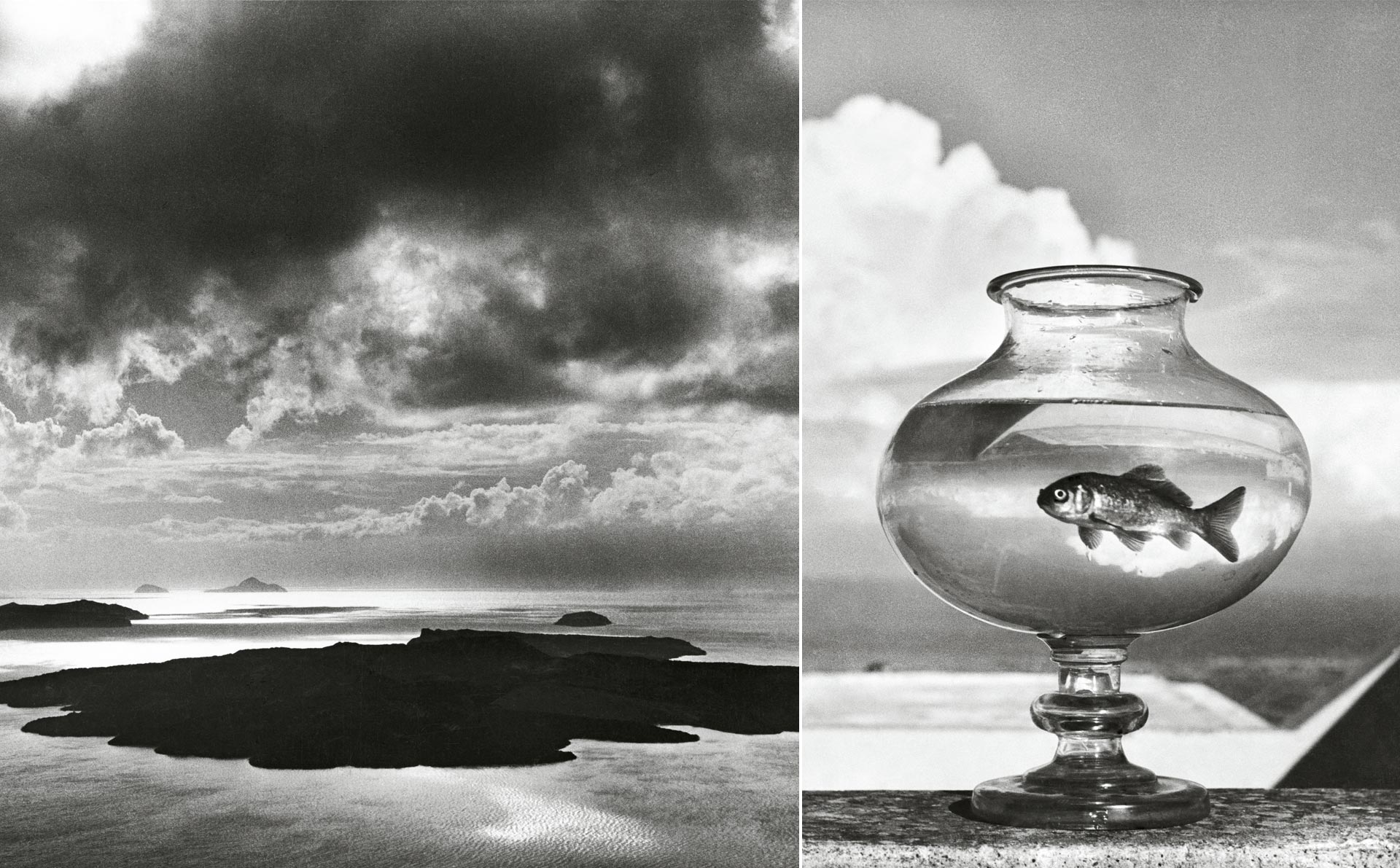
© HERBERT LIST
HERBERT LIST (1903 – 1975)
Herbert List’s austere, classically-posed black-and-white compositions have been highly formative for modern photography. Forced to flee Germany in 1936, List photographed in Greece in 1937 and 1938, producing still-lifes influenced by Giorgio De Chirico’s metaphysical paintings. He wrote that the fish in its bowl was a metaphor for the human spirit, which, confined by flesh, is unable to merge with the magnificence of the world.
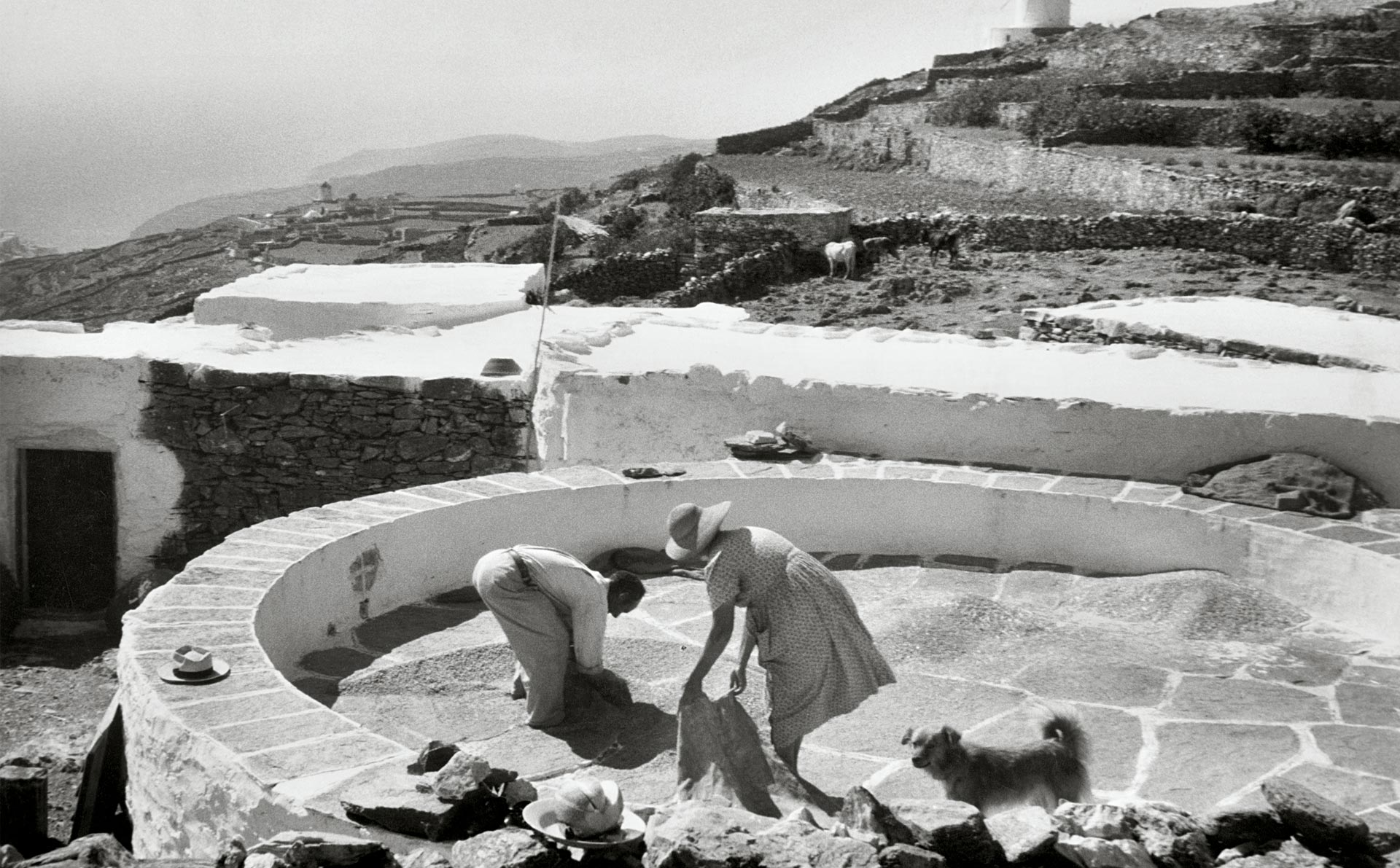
© HENRI CARTIER-BRESSON
HENRI CARTIER-BRESSON (1908-2004)
“We photographers deal in things which are continually vanishing, and when they have vanished there is no contrivance on Earth can make them come back again. We cannot develop and print a memory.” Cartier-Bresson is considered the father of photojournalism. During two trips to Greece, in 1953 and 1961, he captured daily life, important personalities and simple folk in moments of work and play. Images such as the above comprise a unique testament of a way of life that has vanished under the waves of tourism development.
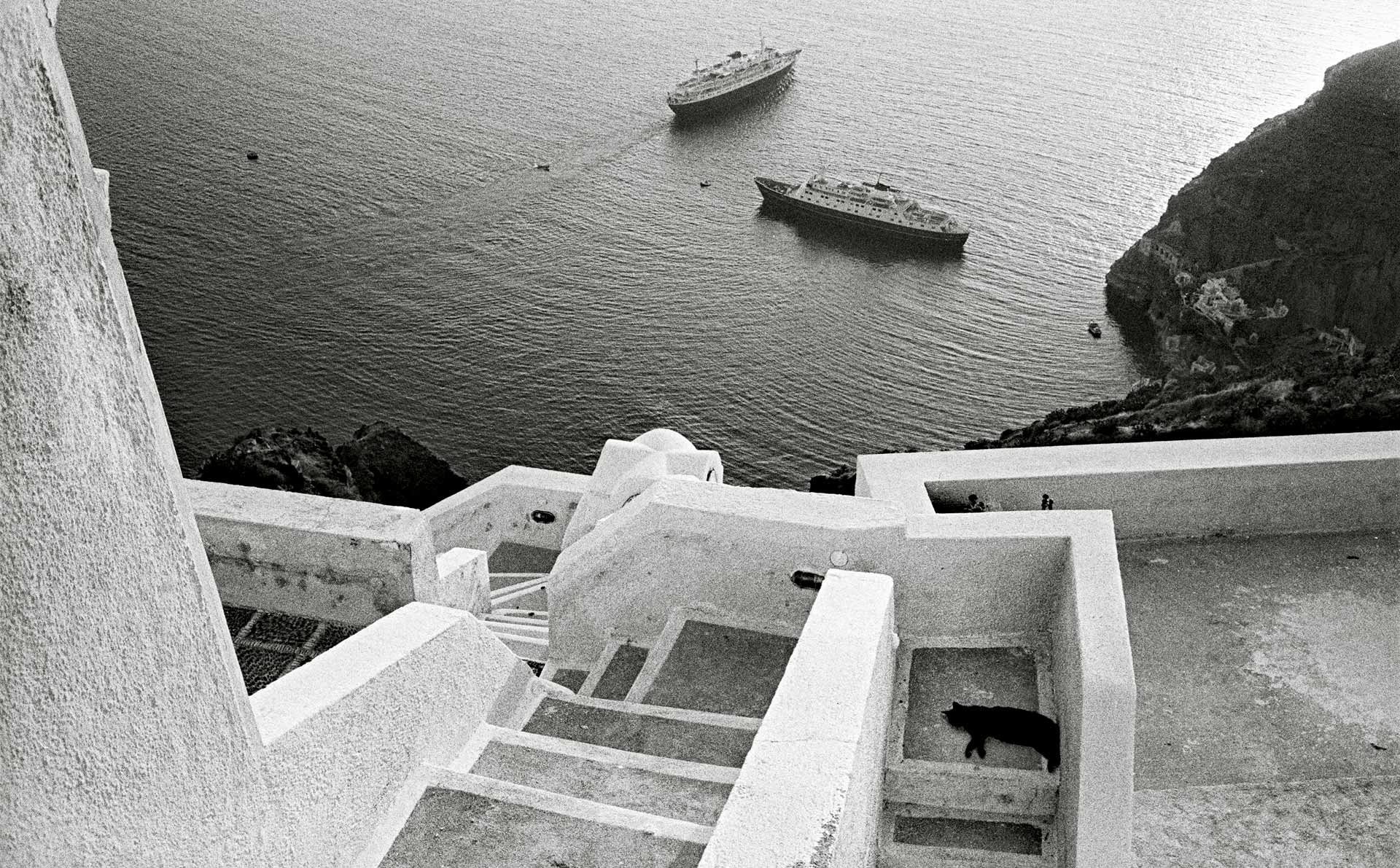
© JOSEF KOUDELKA
JOSEF KOUDELKA (1938- )
“I would like to see everything, look at everything, I want to be the view itself.” Josef Koudelka started his professional life as an engineer in Czechoslovakia, switching to photography in his late 1920s. He photographed the Soviet invasion of his country in 1968 and published his seminal book, “Gypsies,” in 1975. He has been a member of Magnum Photos for more than 40 years.

